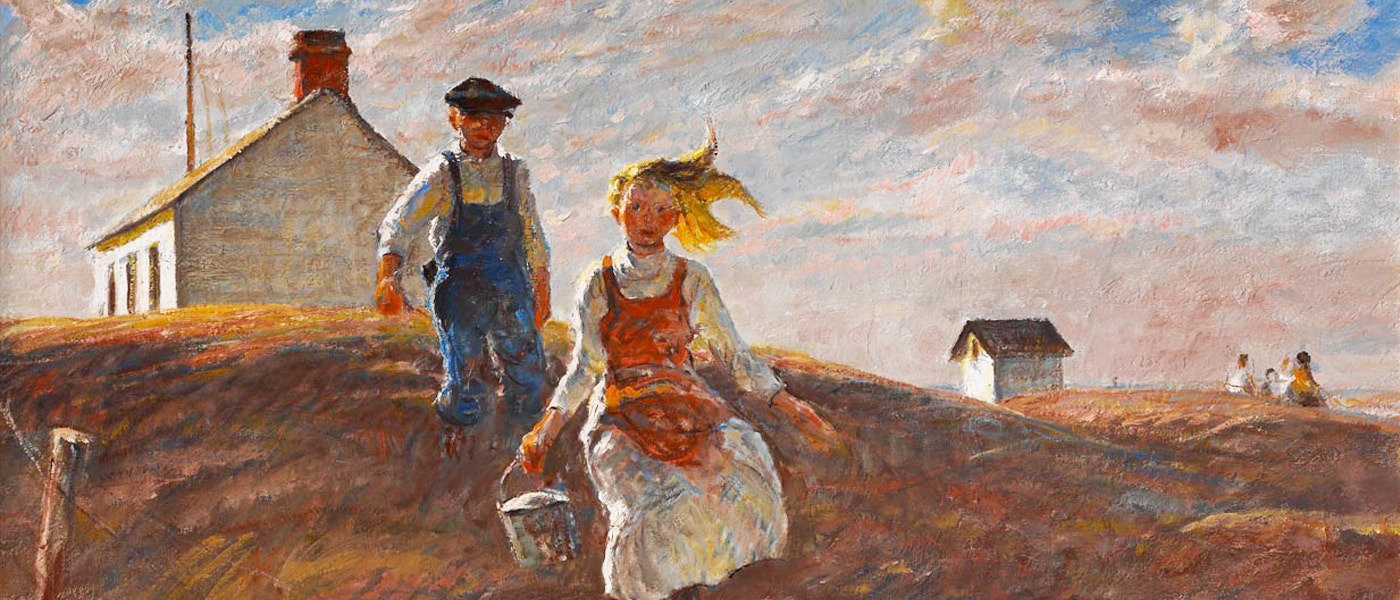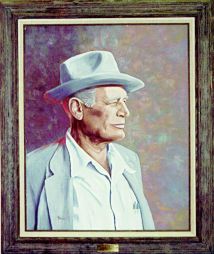History of Harvey Dunn

On March 7, 1884, Harvey Thomas Dunn was born to Tom and Bersha Dunn in a homestead south of the rail line between Manchester and DeSmet along Redstone Creek. At age 4, he moved to the homestead of one of his mother's relatives.
For nine years Harvey attended the Esmond Township School. As a youngster, he sketched endlessly on the blackboard. He drew oxen, flowers, gnarled cottonwoods, and C&NW locomotives. His teacher had to hide the chalk box from him to conserve her supply. That was when he turned to express his artistic urgings with a jackknife on the rough exterior siding of the building.
In 1901, Harvey had completed the equivalent of nine grades at the rural school and had passed the examinations necessary for him to be accepted as a preparatory student at South Dakota Agricultural College (as South Dakota State University was then called).
There he met Miss Ada B. Caldwell, a talented young art teacher. She urged him to seek further training beyond what he was receiving through her instruction. With this Harvey packed up what he owned and went to attend the Chicago Institute of Art in the Windy City. In spirit, he never really left his native state but was never to live in South Dakota again.
He received his training from Howard Pyle, a very noted artist, and at age 22, was advised by him that the time had come for him to begin his illustrating career. He opened his first studio in Wilmington using the name H.T. Dunn.
Harvey's assignments included magazines, book illustrations, and studio productions. He managed to paint in between these projects. Harvey painted everything; he didn't stick to one type of median, and to him art was communication. He instructed his students to paint illustrations that would stand alone and live on, long after the magazines, stories, and authors were forgotten.
Johanne Louise Krebs, nicknamed Tulla, became his wife on March 12, 1908. His son, Robert Kruse Dunn, was born on July 3, 1911, and his daughter, Louise, on November 3, 1912. Harvey Dunn died on October 29, 1952, of prostate cancer. One friend, Arthur R. Mitchell, writes, "Harvey has done something...for Dakota generations yet to come-for he has left there a beautiful and accurate pictorial record of what their country was like immediately following the Indians. Maybe no other state can ever have such a thing."
